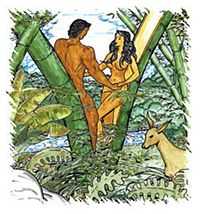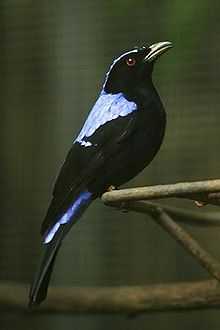Tigmamanukan
| Tigmamanukan | |
|---|---|
| Title | Tigmamanukan |
| Description | Omen/Mythological Bird |
| Gender | Male/female |
| Region | Philippines |
In Philippine mythology, the Tigmamanukan was believed by the Tagalog people to be an omen bird. Although the behaviors of numerous birds and lizards were said to be omens, particular attention was paid to the tigmamanukan.
Etymology
The roots of the word "tigmamanukan" can be traced to the word "manuk" or "manók". In modern Filipino, this is exclusively used for the chicken (Gallus galls domesticus), but in Pre-colonial Philippines (as documented by early explorers in the 17th century) it had the more general usage for any bird, lizard or snake that crossed one's path as an omen. Such encounters were called salubong ("meeting", "encounter").[1]
Superstitions

According to San Buenaventura's 1613 Dictionary of the Tagalog Language (one of the few primary written sources for Philippine precolonial culture), the Tagalogs believed that the direction of a tigmamanukan flying across one's path at the beginning a journey indicated the undertaking's result. If it flew from right to left, the expedition would be a success. This sign was called "labay", a term still present in some Filipino languages with the meaning "proceed". If the bird flew from left to right, the travelers would surely never return.
It was also said that if a hunter caught a tigmamanukan in a trap, they would cut its beak and release it, saying "Kita ay iwawala, kun akoy mey kakawnan, lalabay ka." ("You are free, so when I set forth, sing on the right.")[2]

In mythology
In at least one telling of the Filipino creation myth, the Tigmamanukan was responsible for opening the bamboo from which emerged the first man, Malakas, and first woman, Maganda.[3]
Possible species
While the name "tigmamanukan" is no longer used today, some early western explorers say that the specific bird referred to by the name is a fairy bluebird (genus Irena and family Irenidae). One explorer specifically identified the Asian Fairy Bluebird (Irena puella turcosa)[4] while another specifically identified the Philippine Fairy Bluebird (Irena cyanogastra).[5] In any case, most of the sources which describe the tigmamanukan agree that it is distinguished by a "blue" color.[6]
See also
References
- ↑ Scott, William Henry (1994). Barangay: Sixteenth Century Philippine Culture and Society. Quezon City: Ateneo de Manila University Press. ISBN 971-550-135-4.
- ↑ San Buenaventura, Pedro de (1613). "Vocabulario de lengua Tagala". Pila.
- ↑ Zamora, Adelaida (24 February 2005). "Nagbuhat Sa Bughaw". Retrieved 2007-09-30.
- ↑ Forbes, Henry (Oct 1885). "A Naturalist's Wanderings in the Eastern Archipelago. A Narrative of Travel and Exploration from 1878 to 1883". The American Naturalist 19 (10): 975–977. doi:10.1086/274069.
- ↑ Meyer, A.B.. "The Tagals Tigmamanukan". In Blumentritt, Ferdinand. Dictionario Mitologica de Pilipinas. pp. 34, 118.
- ↑ Garcia, Mauro (Ed.) (1979). "Readings in Philippine Prehistory". Manila 1979: Filipiniana Book Guild, Inc.